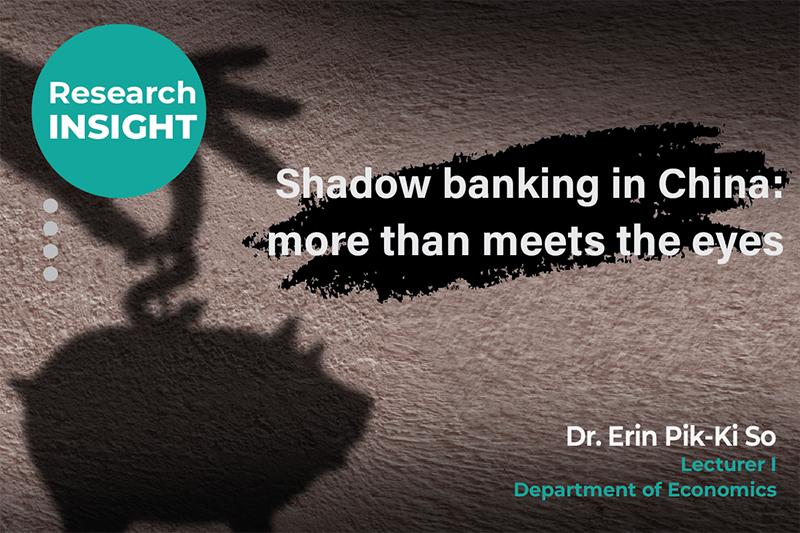School of business - research
Shadow banking in China: more than meets the eyes


Often vilified in the financial press, China’s shadow banking sector has become a convenient scapegoat for the country’s rising debt levels. But is that reputation justified? In “Not all shadow banking is bad! Evidence from credit intermediation of non‑financial Chinese firms”, a team of researchers explores the contribution of this controversial sector to the growth of China Inc.
In many developing countries, the financial intermediation role played elsewhere by regulated institutions often occurs outside the formal banking system, hence the moniker “shadow banking”. In the PRC, the size of this sector exploded to reach RMB 64.5 trillion (USD 9.34 trillion) – 76% of China’s GDP – in 2017. This torrid growth was triggered by the inability of the country’s banking system to cope with the demand for loans fuelled by China’s massive stimulus package of 2009. As regulations on capital adequacy and deposit rates further increased the country’s corporate debt overhang (a form of underinvestment caused by a lack of credit), companies turned to alternative channels such as entrusted loans and wealth management products to fund their investments.
Using data from 2009 to 2016, the researchers looked at entrusted loans – loans made between companies using banks as agent – to investigate the relationship between leverage and investment in China’s corporate sector. The conclusion? These loans did help reduce the debt overhang of borrowers.
This was more apparent for private firms active in industries where state-owned enterprises (“SOEs) acted as lender, which is consistent with the idea that SOEs’ extensive networks make it easier for them to bet on the right borrowers. Not surprisingly in a country where guangxi matters as much as financial statements, political connections proved instrumental in securing better terms for SOEs – they tend to get preferential treatment anyway – and key for private firms seeking to tap these channels.
Were these loans viable? Findings show that lenders to private firms operating in industries where SOEs acted as creditors actively monitored their borrowers’ activities – thus improving market discipline – while loans made to SOEs came with limited oversight due to their special status within China’s system.
While the jury is out on whether China’s overall “shadow banking” sector poses a systemic risk to the country’s financial system, it seems this channel has been successful in helping some deserving firms get loans while enhancing the efficiency of the system. Don’t bet on it getting good press though!
Reference:
Dang, Vinh Q.T., Otchere, I., So, P., & Yan, Isabel K.M. (2021). Not All Shadow Banking is Bad! Evidence from Credit Intermediation of Non-financial Chinese Firms. Review of Quantitative Finance and Accounting.